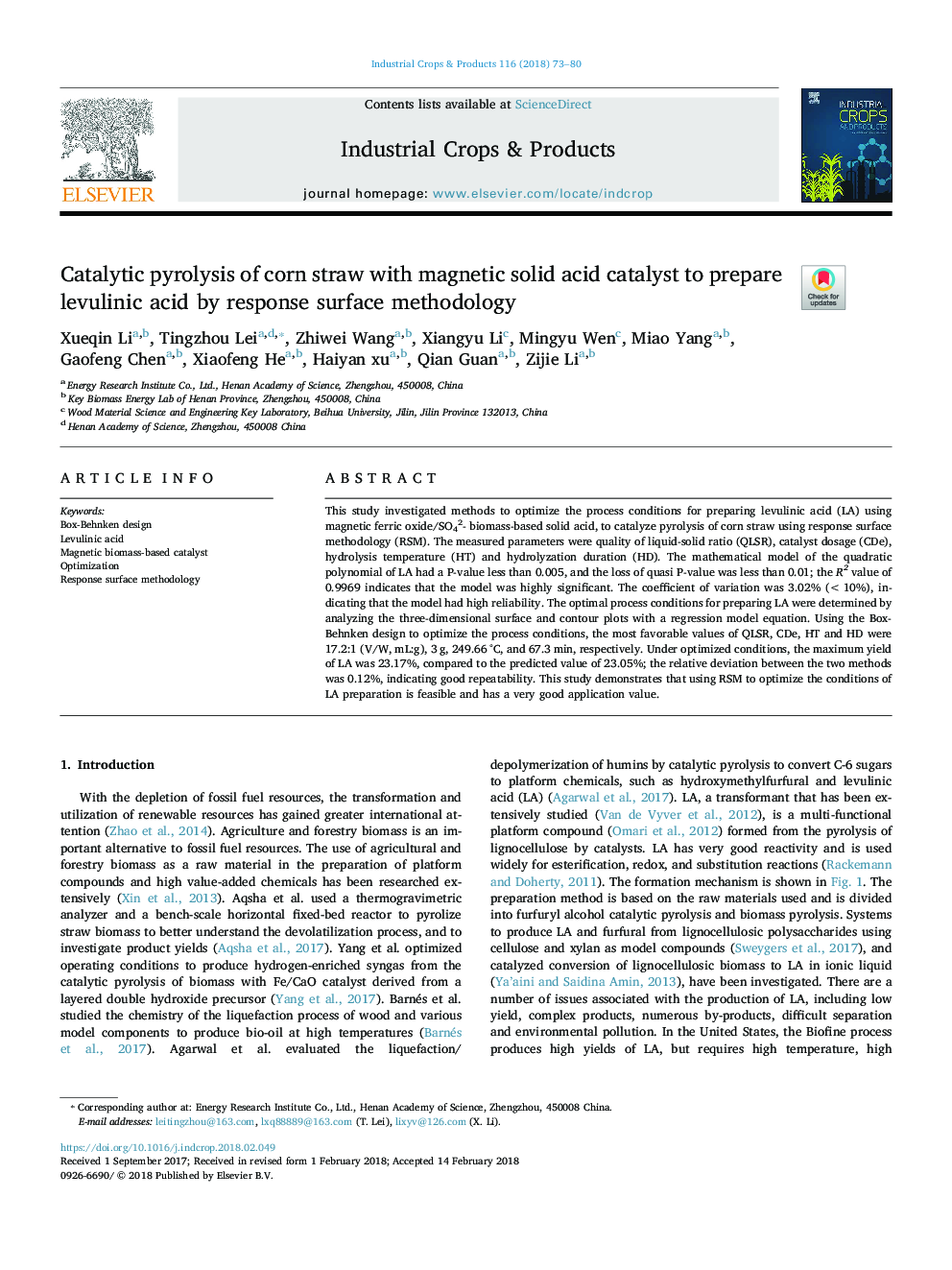| Article ID | Journal | Published Year | Pages | File Type |
|---|---|---|---|---|
| 8880275 | Industrial Crops and Products | 2018 | 8 Pages |
Abstract
This study investigated methods to optimize the process conditions for preparing levulinic acid (LA) using magnetic ferric oxide/SO42- biomass-based solid acid, to catalyze pyrolysis of corn straw using response surface methodology (RSM). The measured parameters were quality of liquid-solid ratio (QLSR), catalyst dosage (CDe), hydrolysis temperature (HT) and hydrolyzation duration (HD). The mathematical model of the quadratic polynomial of LA had a P-value less than 0.005, and the loss of quasi P-value was less than 0.01; the R2 value of 0.9969 indicates that the model was highly significant. The coefficient of variation was 3.02% (<10%), indicating that the model had high reliability. The optimal process conditions for preparing LA were determined by analyzing the three-dimensional surface and contour plots with a regression model equation. Using the Box-Behnken design to optimize the process conditions, the most favorable values of QLSR, CDe, HT and HD were 17.2:1 (V/W, mL:g), 3â¯g, 249.66â¯Â°C, and 67.3â¯min, respectively. Under optimized conditions, the maximum yield of LA was 23.17%, compared to the predicted value of 23.05%; the relative deviation between the two methods was 0.12%, indicating good repeatability. This study demonstrates that using RSM to optimize the conditions of LA preparation is feasible and has a very good application value.
Related Topics
Life Sciences
Agricultural and Biological Sciences
Agronomy and Crop Science
Authors
Xueqin Li, Tingzhou Lei, Zhiwei Wang, Xiangyu Li, Mingyu Wen, Miao Yang, Gaofeng Chen, Xiaofeng He, Haiyan xu, Qian Guan, Zijie Li,
